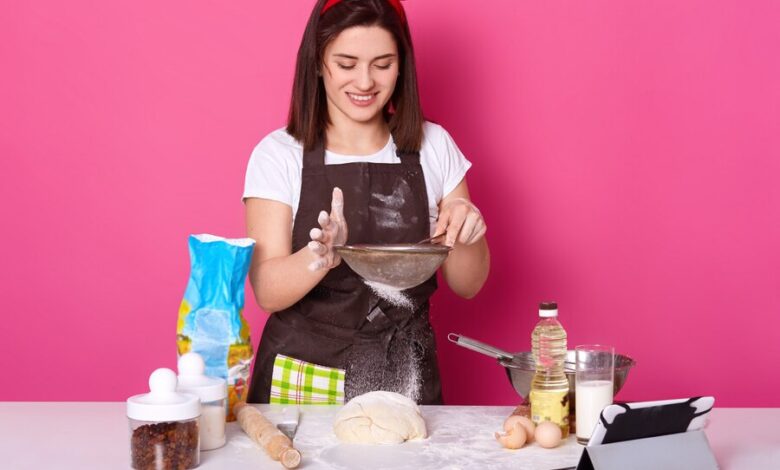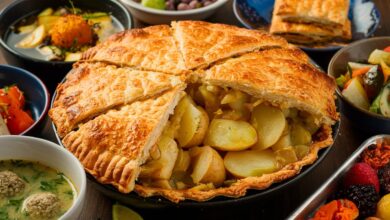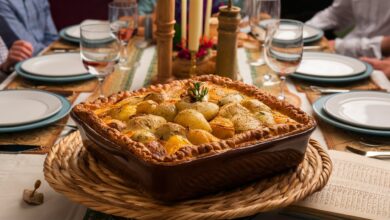
When it comes to cooking and baking, precision matters. Measurements can make the difference between a perfect soufflé and a kitchen disaster. Whether you’re a seasoned chef or a beginner in the culinary world, understanding how to convert units of measurement—like 200ml to oz—is an essential skill, especially when working with international recipes.
This guide will walk you through everything you need to know about converting 200ml to ounces, plus handy tips for accurate measurements, common mistakes to avoid, and practical examples that will elevate your kitchen game.
Why Volume Measurement Matters in the Kitchen
Accurate volume measurement is the foundation of good cooking and baking. Too much liquid, and you could end up with a soggy mess. Too little, and your end result might lack flavor or moisture.
For instance, if a French recipe asks for “200ml” but your measuring tools are marked in ounces, being able to convert ml to oz ensures your dish turns out as expected. This is particularly important in baking, where small inaccuracies can lead to big changes in texture and taste.
Understanding 200ml and Its Common Uses
Before we get into conversions, let’s break down what 200ml actually means.
Milliliters (ml): This is a metric unit used worldwide to measure liquid volume. It’s widely used in recipes and is especially prevalent in countries outside the United States.
What Does 200ml Look Like?
- 200ml is equivalent to about 4/5 of a U.S. cup.
- It’s roughly the amount of liquid you’d use in a single serving of soup or in a basic cake batter.
Using 200ml is common for recipes involving liquids like milk, water, or oil.
How to Convert 200ml to Ounces
If your recipe measures in milliliters, but your tools use ounces, converting 200ml to oz is simple with the right approach.
What You Need to Know Before Converting
There are two types of ounces—fluid ounces (fl oz) for measuring liquids and ounces for weight. This guide refers specifically to fluid ounces, which measure volume, not weight.
Step-by-Step Conversion Guide
- Know the Ratio:
-
- 1 milliliter (ml) = 0.033814 fluid ounces (fl oz).
- To convert ml to oz, multiply the number of milliliters by 0.033814.
- Do the Calculation for 200ml:
-
- 200ml x 0.033814 = 6.7628 fl oz.
- Rounded off, 200ml is approximately 6.76 oz.
- Practical Tip:
If you’re using a standard U.S. measuring cup, 200ml is just under 7 fl oz, so you can round it up when precision isn’t critical.
Visual Aids for Quick Reference
Here’s a handy chart to help you quickly convert milliliters to ounces without reaching for your calculator.
| Milliliters (ml) | Fluid Ounces (fl oz) |
|---|---|
| 50ml | 1.69 fl oz |
| 100ml | 3.38 fl oz |
| 150ml | 5.07 fl oz |
| 200ml | 6.76 fl oz |
| 250ml | 8.45 fl oz |
Save this chart or print it out for a quick reference when you’re in the kitchen!
Recipes That Use 200ml
Now that you’ve mastered the conversion, let’s explore some recipes where you’re likely to encounter 200ml measurements.
- Classic Pancakes:
-
- 200ml of milk creates the perfect batter consistency for fluffy pancakes.
- Vanilla Sponge Cake:
-
- Adding 200ml of oil keeps the cake moist and rich.
- Homemade Lemonade:
-
- Combine 200ml of fresh lemon juice with water and sugar for a refreshing drink.
Experimenting with these recipes will help you understand how this volume plays a role in achieving delicious results.
Tips and Tricks for Accurate Measurements in the Kitchen
- Use a Liquid Measuring Cup: Unlike dry measuring cups, liquid measuring cups account for sloshing and overflow.
- Level the Surface: Place your measuring tool on a flat, even surface to avoid errors caused by tilting.
- Measure at Eye Level: Get down at eye level when measuring liquids to ensure you’re using the correct amount.
Common Mistakes to Avoid
- Confusing Fluid Ounces with Ounces by Weight: Remember, fluid ounces are a measure of volume, not weight.
- Not Checking the Unit System: U.S. and metric measurements aren’t interchangeable, so double-check if your tools match the recipe.
- Guessing Measurements: Eyeballing amounts increases the likelihood of inconsistency.
Useful Conversions for International Recipes
When working with global recipes, being familiar with other common volume conversions is helpful.
Common Conversions
- 1 Cup (U.S.): 240ml
- 1 Tablespoon: 15ml
- 1 Teaspoon: 5ml
By mastering conversions like these, you can confidently tackle recipes from any corner of the world.
Make Precision Your Secret Ingredient
Converting measurements like 200ml to oz may seem trivial, but for home cooks and bakers, it’s the key to creating consistent, delicious results every time. With accurate conversions, you’ll not only achieve better outcomes but also gain the confidence to experiment more in the kitchen.
The next time you come across a recipe with an unfamiliar measurement, refer back to this guide and make your cooking experience stress-free.
Happy cooking!



